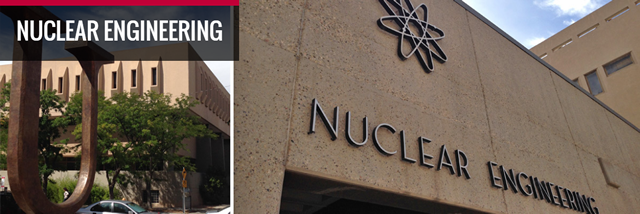
Nuclear Engineering ETDs
Publication Date
Spring 4-15-2022
Abstract
To make it more clear that how the materials’ thermal-physical properties and wall thickness have influential impacts on boiling heat transfer characteristics of cladding, this dissertation looks into the potential impacts of cladding materials on critical heat flux and heat transfer coefficients by a systematic experimental investigation across a wide range of pool/flow boiling conditions under the steady-state and power-transient heat inputs.
Recent thermal-hydraulics studies have demonstrated that iron-chromium-aluminium (FeCrAl) alloys have the thermal priorities over zircaloys and other commercial alloys including critical heat flux and heat transfer coefficient. However, it is found in our experimental results that FeCrAl-C26M, and FeCrAl-C36M have higher critical heat fluxes and heat transfer coefficients than zircaloys and stainless steels while FeCrAl- B126Y and FeCrAl-B136Y have lower critical heat flux than zircaloys. This speaks to the possibility that the superiority of accident tolerant fuel claddings depends on which alloys they belong to. However, the difference gap of critical heat flux and of heat transfer coefficient between various cladding materials can be suppressed by high mass flux and/or high inlet subcooling. The one possible mechanistic rationale behind this is that the material-side factors related with near-field mechanisms such as surface wettability/roughness, and thermal-physical properties, compete with the far-field heat convection mechanisms dominated by mass flux and inlet subcooling. Besides the steady-state boiling experiments, the FeCrAl and zircaloy claddings are subjected to the power transient heat inputs of linear ramp and Fuchs-RIA. In comparison with the steady-state flow boiling, the power transient maximum heat flux is larger than the steady-state critical heat flux and so is the power-transient heat transfer coefficient. As a result, it implies that the power transient state of light water reactors gives higher thermal safety margin than their nominal steady states. The experimental results of Fuchs-reactivity initiated accident power transient across a wide range of inlet subcoolings and mass fluxes give a solid confirmation to that the difference gap of power transient maximum heat flux between various transient timescales and cladding materials can be suppressed by the increasing of mass flux and inlet subcooling. This connotes that the power-transient boiling heat transfer may be dominated by two completely distinct mechanisms, heat conduction between cladding solid and water coolant competing with heat convection that are contributed by mass flux and inlet subcooling.
Keywords
accident tolerant fuel claddings, critical heat flux, boiling heat transfer, light water reactor safeties, power transient and steady-state
Document Type
Dissertation
Language
English
Degree Name
Nuclear Engineering
Level of Degree
Doctoral
Department Name
Nuclear Engineering
First Committee Member (Chair)
Minghui Chen
Second Committee Member
Anil K. Prinja
Third Committee Member
Osman Anderoglu
Fourth Committee Member
Amir F. Ali
Fifth Committee Member
Nima Fathi
Recommended Citation
He, Mingfu Mr.. "Experimental Investigations on Boiling Heat Transfer Characteristics of Accident-Tolerant-Fuel and Traditional Claddings." (2022). https://digitalrepository.unm.edu/ne_etds/103


